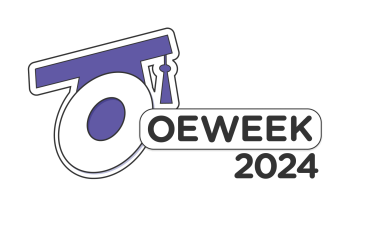The term ‘openness’ covers a very wide range of possibillities and applications. From open licenses and open resources (‘big’ and ‘little’) to full courses, open and online learning experiences, open pedagogy, and so on and so forth. The starting points for all are the same: increasing access and decreasing limitations. Most notably for open resources, openness relates to the 5 permissions as stated by David Wiley:
- Retain - make, own, and control a copy of the resource (e.g., download and keep your own copy).
- Revise - edit, adapt, and modify your copy of the resource (e.g., translate into another language.
- Remix - combine your original or revised copy of the resource with other existing material to create something new (e.g., make a mashup)
- Reuse - use your original, revised, or remixed copy of the resource publicly (e.g., on a website, in a presentation, in a class)
- Redistribute - share copies of your original, revised, or remixed copy of the resource with others (e.g., post a copy online or give one to a friend)
Knowing that openness allows you to reuse, adapt/change and remix, is key. For lecturers designing and developing meaningful learning experiences, open flavours could be finding and reusing existing educational resources, such as video’s, slideshows, or (open)textbooks, and reuse them as is (retain/reuse). Next remixing chapters in different (open) textbooks, or making an overview of video’s explaining a topic from different perspectives could be an option, either or not at all Integrating this in your flipped classroom approach for instance. And you don’t even have to do it all yourself: giving your students an assignment including all these activities themselves could be a very fruitful learning experience; Ask you students to find (openly licensed) resources and reason why they fit the topics you discussed in class (reuse); Have your students remix an open textbook, edit a video shared by a lecturer at another university (revise/remix); or have your students remix or create resources and share them with an open and online community for instance (redistribute). The possibillities are endless.
As you can see, the world of ‘opennes’ could increase your blended palet with more flavours to pick from. And as goes for Retaining/Revising/reusing/remixing/redistributing, the same challenges and conditions as for other blended approaches apply: look for a good mix, an appropriate context, a good blend.
But you could start small.
- Stop googling your images, but find them at places where open licenses have been taken care of, such as https://search.creativecommons.org or https://unsplash.com
- Start by using openly licensed resources in your next Powerpoint presentation.
- Add a creative commons license to your own presentations in your slide master (and find out what this means) https://creativecommons.org/share-your-work/
Experience what it means. Set the example. Inspire others. And start thinking about what you can do to gice students the learning experience they need.



0 Praat mee